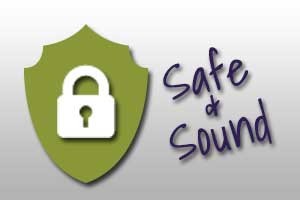Above & Beyond Taking As Directed
 Part 1 of Opioid Safety discussed what you should know about taking opioids and how to reduce your risks, including recognizing and responding to overdose. Part 2 is dedicated to safety issues that help you keep your supply protected and out of the hands of others who should not have access to these important medications.
Part 1 of Opioid Safety discussed what you should know about taking opioids and how to reduce your risks, including recognizing and responding to overdose. Part 2 is dedicated to safety issues that help you keep your supply protected and out of the hands of others who should not have access to these important medications.
Why is this important? According to results from the 2010 National Survey on Drug Use and Health (NSDUH), an estimated 2.4 million Americans used prescription drugs non-medically for the first time within the past year, which averages to approximately 6,600 initiates per day. More than one-half were females and about a third were children aged 12 to 17. When asked how prescription opioids were obtained for nonmedical use, more than half of the 12th graders surveyed said they were given the drugs or bought them from a friend or relative; many were given for free.
More Opioid Safety Tips:
- Safeguard your opioid medication supply to prevent it from getting into the wrong hands. This cannot be emphasized enough. If taken in the wrong way or in the wrong hands, they can cause accidental overdose or even death of others including children and pets. When picking up your prescription, be aware of your surroundings and the time of day. Do not be a target for theft once you receive your medication supply. Protect your medication as you would your money. Try not to be alone, particularly at night or in an unsafe neighborhood when you visit the pharmacy.
- Safely store your medication and “Take Stock” of that supply:
- Do not keep these medications in your bathroom medicine cabinet. Dark, moist locations are the worst place to store medicines as they will go bad quickly and the FIRST place thieves will look.
- Be responsible and treat your pain medications as you would any other valuable piece of property (jewelry, critical documents). Keep them safely locked in a drawer/box or invest in a small safe/lock box.
- Consider telling a trusted friend or care giver how to access your medication if you are ever too sick or unable to access them yourself. You could consider having this information secured in your medical record. Keep a current medication list along with those medications, too.
- Take stock of your medication supply by routinely counting or marking bottles to keep track of the amount of pills and liquid you currently use. This is one way to detect if/when someone is tapping your supply.
- If your prescription supply comes up missing, don’t be ashamed to report it, even if you suspect a loved one. Diversion is a crime and may be a sign of someone having a drug abuse problem. Hiding this under the covers will only cause harm to you and those you care about.
- If your medication prescription or supply is lost or stolen, you should notify your healthcare provider right away. Please file a police report, ask for a copy of the report for your medical records. This helps law enforcement track criminal behavior and keeps you from being accused of irresponsible, medication use. In fact, a second report could be requested for your insurance company, to help avoid a denial of a new prescription refill request.
- When you no longer need your opioid medication they should be discarded in a safe manner. In fact, it is a good idea to begin a routine every year to take stock, clean out and dispose of any old or leftover medication of any kind. One way to easily remember is during the time changes (spring forward/fall back) to clean out your medication supply.
Many communities are adopting safe disposal “take-back” programs. These allow the public to bring unused medications to a designated location for proper, environmentally-safe disposal. They may either be located in your local police departments and in some states, drop boxes are available in pharmacies. For home disposal, the Food & Drug Administration has guidelines to follow.
It is essential to be “Safe & Sound on Opioid Safety”. Opioid pain medications can be effective medications for those living with pain that is not easily relieved and may allow for better functioning during life activities. Opioids can be safely used when prescribed appropriately and taken wisely. For some these medications are live savers. However, for others, they may become life takers. Together, we can be responsible and share in protecting their needed access while working with others to lessen the co-existing problems of misuse, abuse, overdose and diversion. It is the right thing to do.

Its interesting how those who did so much to promote the use of opioids now wish to promote the safe use of opioids-with as much confidance and certainty as they had before there was an “opioid epidemic”. I guess as Churchill wrote; ocassionally people stumble on the truth-then brush themselves off as if nothing happened.